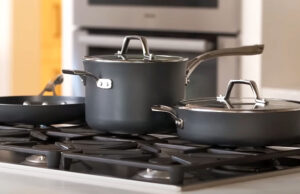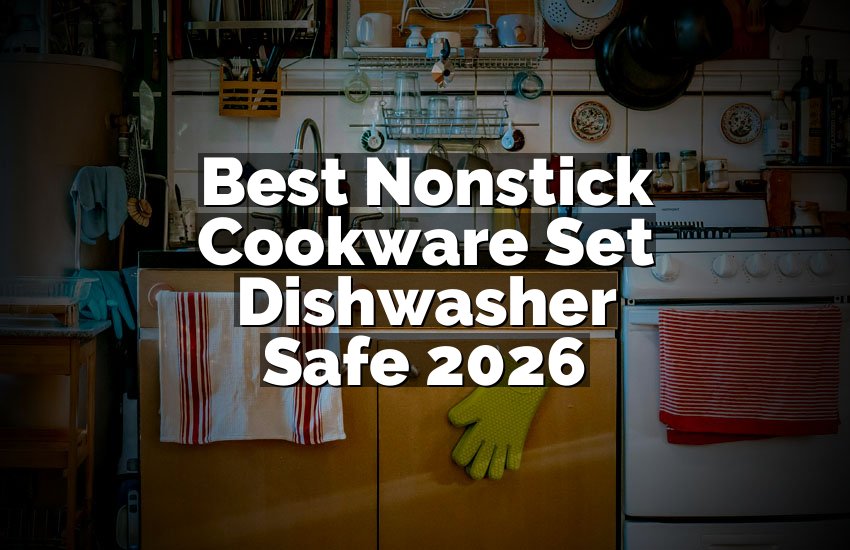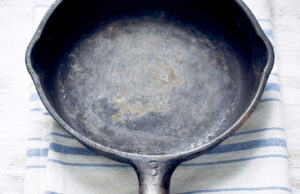As an Amazon Associate, I earn from qualifying purchases at no extra cost to you.
Whirlpool Dishwasher Troubleshooting Codes (6 Fixes)
You know that feeling when your Whirlpool dishwasher suddenly flashes strange codes and just stops working right? It’s super frustrating, especially when you just want your dishes clean after a long day. Don’t worry — you are not alone. I went through the same thing, and I found real solutions that worked. In this article, I will show you exactly how to understand and fix Whirlpool dishwasher troubleshooting codes. You will learn easy steps to handle the problems without calling a repair guy. Everything is explained in a very simple way.
Check What the Code Means First
Before you do anything, the first thing is to understand what the code on your dishwasher screen means. Whirlpool dishwashers usually show error codes when something is not working right. These codes can be letters and numbers like F2E2, F9E1, or just blinking lights. Each one tells you a different problem.
For example, F2E2 means there is a problem with the control panel. F9E1 means your dishwasher is having trouble draining water. Knowing what the code means will help you understand what to fix.
So how do you check what the code means? First, look at your dishwasher’s screen. Write down the code you see. If it’s not clear, you might see flashing lights. Count how many times each light blinks. Then search online or check the manual that came with your dishwasher. Whirlpool has a full list of what every code means. Or you can read this article because I already explained most of the common ones here.
Another way is to press certain buttons on the control panel to make the machine go into Diagnostic Mode. On many Whirlpool models, press these buttons in this order — any three buttons one after another (except Start), and repeat that 3 times. For example, 1-2-3, 1-2-3, 1-2-3. This will start the test cycle, and the dishwasher will show error codes.
Understanding the meaning behind the code gives you control. You will feel more confident and ready to handle the issue.
- Find the code on the screen or lights.
- Search what the code means online or in the manual.
- You can run Diagnostic Mode to read hidden codes.
- F2E2 means control panel issue.
- F9E1 means draining problem.
Clean the Filters and Drain Area
After you know what the code means, the next thing to check is the filter and the drain area. Most Whirlpool dishwasher errors are because of simple things like food or grease blocking the filter or drain.
Start by opening the dishwasher and taking out the bottom rack. You will see a round or square filter at the bottom. Turn it and pull it out. Be careful — it might be slimy or smelly. Wash it with warm soapy water. Use a toothbrush if you need to scrub stuck food or gunk.
Now look inside where the filter was. That’s the drain area. If there is water in there, use a towel to soak it up. Look for anything stuck like food, paper, glass, or small plastic pieces. Remove anything you find.
If your code was about draining (like F9E1), this step is super important. The machine can’t drain water if something is stuck. That makes the machine stop in the middle of a wash and flash the code.
If the problem continues, try checking the drain hose at the back of the machine. Make sure it is not kinked or blocked. You might need to pull the dishwasher out a little to see this.
Also, clean the air gap if your sink has one. It’s a small metal or plastic cap next to the faucet. Take it off and clean it inside.
You don’t need tools for this, just patience and warm water. It sounds small, but it can solve a big problem.
- Take out the bottom rack and clean the filter.
- Check the drain area for food or debris.
- Look at the drain hose and make sure it’s clear.
- Clean the air gap near the sink if there is one.
- Use warm soapy water and a brush for cleaning.
Reset the Dishwasher to Clear the Code
Once you clean the filters and check the drain, sometimes the code still stays on the screen. That’s when you need to reset the machine. A reset helps your dishwasher start fresh, like restarting a phone when it freezes.
The easiest way to reset is to turn off the power. Go to your breaker box and switch off the power to the dishwasher. Wait for 5 minutes, then turn it back on. This can clear many codes and fix small glitches.
You can also try a button reset. On most Whirlpool models, press the ‘Start/Cancel’ button and hold it for 5 seconds. The lights may flash or turn off. Then open and close the door. This tells the dishwasher to cancel the error.
Another method is using Diagnostic Mode again. Like before, press any three buttons (except Start) one after another and repeat it three times. This starts a self-check process. The dishwasher will show all the lights and try to fix itself.
If the code goes away, that means your problem is fixed. If it comes back, go back to cleaning or check for another reason.
Resetting is safe and can fix many issues without touching any parts inside.
- Turn off power from the breaker for 5 minutes.
- Press and hold ‘Start/Cancel’ button for 5 seconds.
- Try the Diagnostic Mode trick.
- Open and close the door after reset.
- Check if the code comes back.
Check the Water Supply
Another reason your Whirlpool dishwasher might show error codes is the water supply. Your dishwasher needs enough clean water to run properly. If water is not coming in or too little, you will see codes like F6E1 or F8E1.
First, make sure your water valve under the sink is open. Sometimes it gets turned off by mistake. Turn it to the left to open fully.
Then, check the water hose that connects to the dishwasher. Make sure it’s not bent or squeezed. A kinked hose stops water from flowing. You may need to pull the dishwasher out slightly to check this.
If you feel okay doing more, remove the toe panel at the bottom front of the dishwasher. You can see the water inlet valve. This is the part where the water enters. Sometimes the screen inside gets clogged. If you are careful, you can clean the screen with a toothbrush. If the valve is broken, it may need replacing, but that’s usually something a repair person does.
Also, make sure the water is hot enough. If your water heater is set too low, it can cause a heating error code. Whirlpool dishwashers work best with water around 120°F (49°C).
- Make sure the water valve under the sink is open.
- Check the water hose is not kinked.
- Clean the inlet valve screen if possible.
- Make sure your water heater is set around 120°F.
- Water problems can cause F6E1 or F8E1 codes.
Test the Door Latch and Control Panel
Sometimes the problem is not with water or filters but with the door latch or control panel. Whirlpool dishwashers have a safety switch on the door. If it doesn’t close properly, the machine won’t start or will stop mid-cycle.
Open and close the door. Listen for a strong clicking sound. If it feels loose or doesn’t click, the latch may be broken. You might also see codes like F5E1 or F2E2.
Make sure nothing is blocking the door from shutting, like a dish or silverware. Clean around the door seal.
If the control panel is acting strange, like buttons not responding or random lights flashing, try resetting again. If that doesn’t work, the touchpad or the control board might need fixing.
Check if the control panel is wet or dirty. Use a soft dry cloth to clean it. Don’t use water or spray directly.
If your dishwasher is old, the control board can wear out. You may need a technician to replace it.
- Open and close door to check latch.
- Make sure nothing is blocking the door.
- Listen for the clicking sound.
- Clean around the door seal and control panel.
- Codes like F5E1 or F2E2 can mean door or control issues.
Run a Full Diagnostic Cycle
If you have done all the above steps and the code still shows, it’s time to run a full Diagnostic Cycle. This will test every part of the dishwasher and help find the exact problem.
To do this, press three buttons one by one (not Start), and repeat it 3 times. Like 1-2-3, 1-2-3, 1-2-3. The machine will enter test mode. All lights will come on, and the dishwasher will start checking itself.
You will hear it fill with water, spray, drain, and maybe heat up. Watch carefully and listen. If it stops or shows a new code, that tells you what part is not working.
This test can show hidden problems like heating issues, sensor failure, or pump problems. Even if the code is gone, running the test makes sure everything is okay.
After the test, press the ‘Cancel’ button to end the cycle. If it finishes without problems, your dishwasher is ready to use again.
- Run Diagnostic Cycle with button trick.
- Watch and listen to the machine during the test.
- Check for any new codes or errors.
- This test helps find hidden issues.
- End with Cancel button if test runs fine.
Quick Guide Table
| Error Code | Meaning | Possible Fix |
|---|---|---|
| F2E2 | Control panel error | Clean or replace touchpad |
| F9E1 | Drain problem | Clean filter and drain area |
| F6E1 | No water detected | Check water valve and hose |
| F8E1 | Slow fill or no fill | Check inlet valve and water pressure |
| F5E1 | Door not closing | Fix or replace latch |
Final Thoughts
Fixing a Whirlpool dishwasher doesn’t have to be hard or scary. When you learn what the codes mean and follow simple steps, you can fix most problems yourself. You don’t always need to pay someone. Cleaning filters, checking water, and doing a reset can solve many issues fast. Take your time and stay calm. Now that you know what to do, you can save time, money, and stress the next time your dishwasher acts up.
Frequently Asked Questions (FAQs)
Is it safe to reset my Whirlpool dishwasher often?
Yes, it is safe to reset your Whirlpool dishwasher if needed. Resetting helps the machine clear small problems or glitches. Just make sure not to do it too often without fixing the real issue. If your dishwasher keeps showing the same code, find the cause instead of only resetting it. Resetting too many times without solving the problem could lead to more serious issues later. Always check filters, drain area, and water supply first. A reset is like giving your dishwasher a fresh start.
Can a clogged filter cause error codes?
Yes, a clogged filter can easily cause many error codes on a Whirlpool dishwasher. When the filter is blocked, the water can’t drain properly. This causes errors like F9E1. The dishwasher stops to prevent damage or flooding. Cleaning the filter is one of the simplest and most helpful things you can do. If your dishwasher seems slow or noisy, or if water stays at the bottom after a cycle, always check and clean the filter. It only takes a few minutes and can solve a big problem.
Do I need a plumber to fix water fill issues?
You may not need a plumber right away. Many water fill issues can be fixed by checking simple things. First, make sure the water valve under the sink is open. Check the hose for kinks or blockages. If the problem is still there, then maybe the inlet valve is clogged. You can clean it if you feel safe doing that. But if the valve is broken or you are unsure, then yes, a plumber or appliance repair tech may be the best choice to avoid damage or leaks.
Can I replace the door latch by myself?
Yes, if you are careful and follow instructions, you can replace the door latch by yourself. Most Whirlpool dishwashers have easy access to the latch after removing the control panel screws. You will need a screwdriver and maybe a new latch part. Make sure the power is off before you start. If you are not comfortable with tools or unsure what to do, it’s okay to ask someone or call a repair person. But yes, many people fix this part themselves at home with success.
Is it normal for codes to come back after cleaning?
Sometimes yes. Even after cleaning, the code might stay on the screen. That doesn’t always mean the problem is still there. The dishwasher just needs to be reset. Try turning off the power for 5 minutes and then turning it back on. You can also use the reset button or run a Diagnostic Cycle. If the code comes back again after a reset and cleaning, then maybe something deeper is wrong, like a sensor or pump issue. But first try reset and cleaning.
Do I need to clean the air gap?
Yes, cleaning the air gap is very helpful and should be done often. The air gap keeps dirty water from going back into the dishwasher. If it gets clogged with food or grease, the dishwasher may not drain right. This can cause error codes like F9E1. Take off the cap and clean inside with warm water and a brush. It’s easy to do and helps your dishwasher work better. If your sink drains slow or smells bad, the air gap might be the problem.
Can I run a Diagnostic Cycle even without a code?
Yes, you can run a Diagnostic Cycle even if no code is showing. This is a good way to check if everything is working fine. It tests all parts like the pump, motor, heater, and sensors. Sometimes a problem is starting but hasn’t shown a code yet. Running this test can find it early. It’s also helpful after you fix something, to make sure the dishwasher is ready to use. Just use the button trick to start the test cycle anytime.
Do I need to replace the control board if buttons don’t work?
Not always. Sometimes the buttons don’t work because of dirt, water, or a glitch. Try cleaning the control panel gently with a dry cloth. Then try a reset. If the buttons still don’t work, then maybe the touchpad or control board is damaged. This can happen over time. Replacing the board can be tricky, so only try it if you are confident. If not, ask a repair person. But try cleaning and resetting first before replacing anything.




